The 20 Greatest Male Australian Open Champions of All Time, Part 2
No. 10 John Bromwich (Won 1939 and 1946 – RU 1937, 1938, 1947, 1948, 1949 ) 7 Finals, 2 Wins.
Born in Sydney, John Bromwich was an innovator who helped usher in the two-handed forehand.
Primarily a doubles player, Bromwich could also obviously hold his own on the singles court.
He won his first Australian Open in 1939, defeating fellow Aussie Adrian Quist 6-4, 6-1, 6-3.
After the war in 1946, Bromwich again captured the Australian Open title over fellow Aussie Dinny Pails 5-7, 6-3, 7-5, 3-6, 6-2. It was a hard-fought contest.
Bromwich was also runner up five times in 1937, 1938, 1947, 1948 and 1949.
In 1937 Bromwich fell to his doubles partner Vivian McGrath and in 1938 to American Don Budge.
In 1947 Bromwich lost to Dinny Pails, in 1948 to Adrian Quist and in 1949, he lost to fellow Aussie Frank Sedgman.
In all, Bromwich appeared in seven Australian Championship finals, winning twice.
No. 9 James Anderson (Won 1922, 1924, 1925) – 3 Finals, 3 Wins.
Australian James Anderson won the Australian Open three times in the 1920s when the tournament was titled the Australasian Championships––back in the days when not many players traveled down under to participate.
Between 1919 and 1925 Anderson played in 15 Davis Cup ties for Australia and was well-known on the tennis circuit.
In 1922, Anderson defeated Aussie Gerald Patterson 6-0, 3-6, 3-6, 6-3, 6-2.
In 1924, he defeated Richard Schlesinger also from Australia 6-3, 3-6, 3-6, 6-3, 6-2.
Finally in 1925, Anderson upended Patterson again 11-9, 2-6, 6-2, 6-3.
In 1927, the tournament name changed to the Australian Championships.
No. 8 Adrian Quist (Won 1936, 1940, 1948 – RU 1939) – 4 Finals, 3 Wins
Australian Adrian Quist won the Australian Open three times in singles but was known primarily for his stellar doubles play.
The Aussie’s career was a long one played on tennis courts around the world.
Quist managed to capture his first singles title at the Australian Open in 1936 by defeating fellow Aussie Jack Crawford 6-2, 6-3, 4-6, 3-6, 9-7 in a tense five setter.
In 1940 Quist defeated Crawford again 6-3, 6-1, 6-2 in much easier fashion than their 1936 final.
Quist won his last Aussie singles final in 1948, defeating renowned champion John Bromwich 6-4, 3-6, 6-3, 2-6, 6-3.
Bromwich had defeated Quist in the 1939 Australian Open finals 6-4, 6-1, 6-3.
Ultimately Quist appeared in four Australian Championship finals, winning three of them.
No. 7 Rod Laver (Won 1960, 1962, 1969 – RU 1961) – 4 Finals, 3 Wins
Native Australian Rod Laver, who holds a plethora of tennis records, won the Australian Open Championship three times and was a runner-up once.
As the only man in the history of the game to win two calendar year grand slams achieved once in the Open Era and once as an amateur, Laver was one of a legion of Australian tennis players to reign on the tennis stage during his era.
Laver was technically proficient as a serve and volley player with deft touch and tremendous foot speed.
He played during a time when tennis was played primarily on grass and occasionally on clay.
In all, Laver won 11 career grand slam tennis titles and three of them were won in his native country.
In 1960, Laver defeated fellow Aussie Neale Fraser 5-7, 3-6, 6-3, 8-6, 8-6 winning his first Australian Open Championship.
In 1962, Laver defeated Roy Emerson in the finals 8-6, 0-6, 6-4, 6-4 to take his second Australian crown.
Finally in 1969, he defeated Spaniard Andres Gimeno 6-3, 6-4, 7-5.
The Aussie Laver was the runner-up to Roy Emerson in 1961 losing 1-6, 6-3, 7-5, 6-4.
In all, Laver competed in the Australian Open Championships 9 times, making the finals four times, winning three singles titles.
His win-loss record was 23-6, giving the Aussie a winning percentage at the Australian Open of 79.31.
No. 6 Mats Wilander (Won 1983, 1984, 1988 – RU 1985) 4 Finals, 3 Wins.
Swede Mats Wilander holds the distinction of winning the Australian Open on both grass and hard courts, winning the tournament in 1988 when play commenced at Melbourne Park.
In 1983, Wilander won his first Australian Open Championship, defeating Ivan Lendl 6-3, 6-3, 6-2.
It was the Swede’s second career grand slam title.
Wilander repeated his championship run the following year.
In 1984, he defeated South African Kevin Curren 6-7, 6-4, 7-6, 6-2. It was the Swede’s second Australian Open title and his third career grand slam win.
In 1988, playing for the first time on hard courts, Wilander defeated Aussie hero Pat Cash 6-3, 6-7, 3-6, 6-1, 8-6 in a heart-breaker for local fans hoping to see an Australian Champion crowned that afternoon.
In 1988, Wilander would go on to capture the French Open and the U.S. Open, losing only at Wimbledon.
In 1985, Wilander was runner-up to fellow Swede Stefan Edberg losing 6-4, 6-3, 6-3.
In all, Wilander appeared in 10 Australian Open Championships winning three times while appearing in four finals with an over record of 36-7.
The Swede’s winning percentage for the Australian Open was 83.72.
No. 5. Andre Agassi (Won 1995, 2000, 2001, 2003) – 4 Finals, 4 Wins
The great Andre Agassi found his greatest success winning slams in Melbourne.
The American won his first title in 1995 defeating his arch-rival fellow American Pete Sampras 4-6, 6-1, 7-6, 6-4.
It was Agassi’s third grand slam win as well as his first Australian Open title. Sampras was the No. 1 seed that year and Agassi was seeded No. 2.
In the year 2000 Agassi, seeded No. 1, defeated defending champion Yevgeny Kafelnikov 3-6, 6-3, 6-2, 6-4.
The following year, Agassi as the No. 6 seed repeated as champion at the 2001 Australian Open defeating Frenchman Arnaud Clement 6-4, 6-2, 6-2. Agassi won his 46th overall title and his seventh career grand slam title as well as his third Australian Open championship.
In 2003 when Agassi won his fourth Australian Open title, he set an Open Era Record. The win was his eighth and final career grand slam title.
Agassi would never again appear in a final at Melbourne Park. That afternoon the American defeated German Rainer Schuttler 6-2, 6-2, 6-1.
Agassi appeared in nine Australian Open finals, winning four with an overall win-loss record of 48-5. The American’s winning percentage was 90.57.
No. 4. Ken Rosewall (Won 1953, 1955, 1971, 1972 – RU 1956) – 5 Finals, 4 Wins
Like Rod Laver, Ken Rosewall was another of those great Aussie tennis players whose career spanned the amateur-professional years prior to the Open Era.
With his feet in both worlds, Rosewall, like Laver, managed to leave his mark in both.
Combined, Rosewall won four Australian Open championships, two as an amateur and two in the Open Era.
In 1953 Rosewall captured the Australian Open title defeating Mervyn Rose on grass 6-0, 6-3, 6-4.
He won the Australian Open again in 1955 this time defeating fellow Aussie Lew Hoad 9-7, 6-4, 6-4.
Then 16 years later, the amazing Rosewall won again in Sydney defeating American Arthur Ashe 6-1, 7-5, 6-3 in the finals of the 1971 Australian Open.
Rosewall repeated as champion in 1972 defeating Australian Mel Anderson 7-6, 6-3, 7-5.
Rosewall was the runner-up in the 1956 Australian Open, losing to Lew Hoad 6-4, 3-6, 6-4, 7-5.
In all Rosewall competed in 14 Australian Opens, winning four, appearing in five finals with an overall record of 47-10 and a winning percentage of 82.46.
No. 3. Roger Federer (Won 2004, 2006, 2007, 2010 – RU 2009) – 5 Finals, 4 Wins
Roger Federer is the only active player on this list of the Aussie Open Top 20 Champions and he is one of few who have won four championships in Melbourne, tying him with Andre Agassi in the modern era and with Ken Rosewall and Jack Crawford in the years prior to 1968.
Federer would like to equal the all-time champ, Roy Emerson who won this championship six times. He will not, however, equal Emerson’s record of five consecutive Australian Open titles.
Federer entered the Australian Open in 2004 seeded No. 2 behind American Andy Roddick. He won his first Australian Open championship defeating Marat Safin 7-6, 6-4, 6-2. This also marked his second career grand slam title.
Seeded No. 1 in 2006, Federer captured his second Australian Open title defeating Cypriot Marcos Baghdatis in the final 5-7, 7-5, 6-0, 6-2.
In 2007 the Hawk-Eye line calling system came into play at Melbourne. Federer repeated as the men’s champion, defeating Chilean Fernando Gonzalez 7-6, 6-4, 6-4 giving Federer consecutive titles and his third Australian Open trophy. It was the Swiss’ 10th career grand slam title and his 46th title overall.
Last year in 2010 Federer won his fourth Australian Open title, defeating Scot Andy Murray 6-3, 6-4, 7-6 to seize the trophy and his 16th overall career grand slam title.
Federer was also the runner-up in 2009, losing in the final to Rafael Nadal 5-7, 6-3, 6-7, 6-3, 2-6.
In all Federer has appeared in eleven Australian Opens, winning four times in five final appearances with an overall record of 54-7––a winning percentage of 88.52.
Should Federer win this year, it would give him five Australian Championships, a Open Era record and one step closer to Roy Emerson.
No. 2. Jack Crawford (Won 1931, 1932, 1933, 1935 – RU 1934, 1936, 1940) 7 Finals, 4 Wins
Winning six major titles in his career, Australian Jack Crawford served as the precursor to the legion of Aussie greats who would follow him in later decades into tennis immortality.
In 1933 Crawford seemed destined to be the first male to complete a tennis grand slam.
He won the Australian Open, the French Championships, and Wimbledon.
The Aussie needed only to win the U.S. championship played on Long Island that year to bring home the first grand slam in tennis.
But Crawford had breathing problems, suffering from asthma. The day of the final leading Brit Fred Perry two sets to one, not able to get enough oxygen, Crawford’s stamina deserted him and Perry won the match. Still Crawford was widely acknowledged as one of the Aussie greats.
No other player except Roy Emerson has won three consecutive titles at the Australian Championships.
Crawford won his first Australian Championship in 1931 defeating legendary Harry Hopman 6-4, 6-2, 2-6, 6-1. The following year he again faced Hopman and defeated him 4-6, 6-3, 3-6, 6-3, 6-2 to claim the Australian Championship in 1932.
In 1933 Crawford won the Championship by upending American Keith Gledhill 2-6, 7-5, 6-3, 6-2. Crawford won one more title in 1935 defeating Fred Perry of Great Britain 2-6, 6-4, 6-4, 6-4.
In addition to winning four championships, Crawford was also the runner-up in three more finals.
First in 1934 the Aussie Crawford lost to Brit Fred Perry. In 1936 and in 1940 Crawford came in second to fellow Aussie Adrian Quist, the first in five sets and the second in three.
Jack Crawford, former World No. 1 won four titles, three consecutively in seven Australian Open finals. Ultimately Crawford ended with a 52-15 win-loss record at the Australian Open Championships with a total winning percentage of 77.61.
No. 1 Roy Emerson (Won 1961, 1963, 1964, 1965, 1966, 1967 – RU 1962) – 7 Finals, 6 Wins
Rumor has it that the great “Emmo” was bageled in the last two sets of his first match at the Australian Championships, although Emerson told everyone jokingly that he had no recollection of losing those sets 6-0, 6-0.
Born in Blackbutt about 100 miles from Brisbane, Emerson rose to be the Australian Open’s greatest champion winning a total of six singles titles in seven final appearances.
Emerson also won 12 career grand slam titles, holding the record for most slam singles until Pete Sampras passed him with No. 13 in the year 2000.
Today, however, it is doubtful that any current player will equal Aussie great Roy Emerson’s record of five consecutive Australian Open championships.
In total Emerson won six titles and was also the runner up in a seventh final.
Fellow Aussie Rod Laver interrupted Emerson’s run in 1962 winning that final 8-6, 0-6, 6-4, 6-4––otherwise, Emerson would have won seven consecutive Australian Open titles.
In 1961 Emerson won his first title defeating Laver 1-6, 6-3, 7-5, 6-4. After losing in 1962, Emerson came back to win again in 1963, defeating another Aussie Ken Fletcher 6-3, 6-3, 6-1.
Emerson followed that with another straight-set victory in 1964, this time over Fred Stolle 6-3,6-4, 6-2.
In 1965, however, Aussie Stolle put up more of a fight losing 7-9, 2-6, 6-4, 7-5, 6-1.
The following two years in 1966 and 1967, Emerson defeated American Arthur Ashe 6-4, 6-8, 6-2, 6-3 in 1966 and 6-4, 6-1, 6-4 in 1967.
It may be the definitive run at the Australian Open for the men. In total Emerson participated in 14 Australian Open Champions, winning six times in seven final appearances with an overall record of 58-7 with a winning percentage of 89.23.
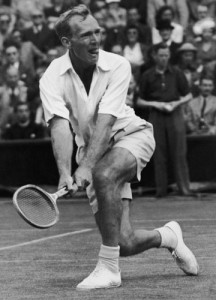

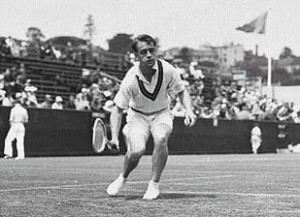
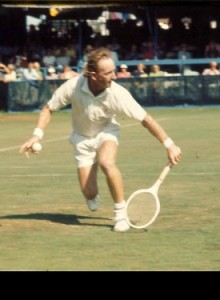
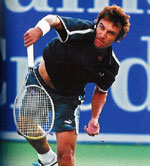
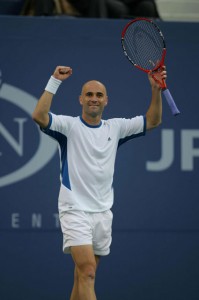
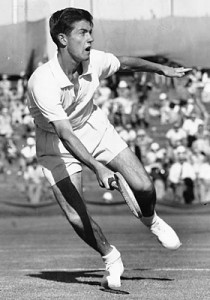

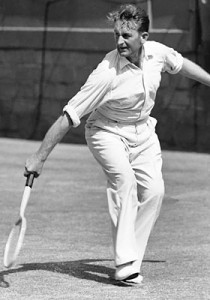
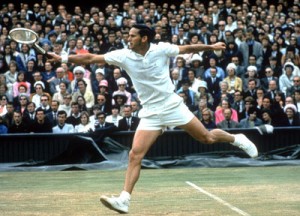
I’m Subscribing Now!!
This is a very good tip especially to those new to the blogosphere.
Short but very precise information… Thank you for sharing this one.
A must read article!
These championship series were the most exciting one that I have ever enjoyed in my life. I am really glad that I was able to get new and fresh updates for this game.